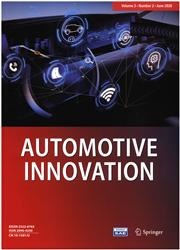A Model-Based Battery Charging Optimization Framework for Proper Trade-offs Between Time and Degradation
Abstract
This study aims at developing an optimization framework for electric vehicle charging by considering different trade-offs between battery degradation and charging time. For the first time, the application of practical limitations on charging and cooling power is considered along with more detailed health models. Lithium iron phosphate battery is used as a case study to demonstrate the effectiveness of the proposed optimization framework. A coupled electro-thermal equivalent circuit model is used along with two battery health models to mathematically obtain optimal charging current profiles by considering stress factors of state-of-charge, charging rate, temperature and time. The optimization results demonstrate an improvement over the benchmark constant current–constant voltage (CCCV) charging protocol when considering both the charging time and battery health. A main difference between the optimal and the CCCV charging protocols is found to be an additional ability to apply constraints and adapt to initial conditions in the proposed optimal charging protocol. In a case study, for example, the ‘optimal time’ charging is found to take 12 min while the ‘optimal health’ charging profile suggests around 100 min for charging the battery from 25 to 75% state-of-charge. Any other trade-off between those two extreme cases is achievable using the proposed charging protocol as well.

 求助内容:
求助内容: 应助结果提醒方式:
应助结果提醒方式:


